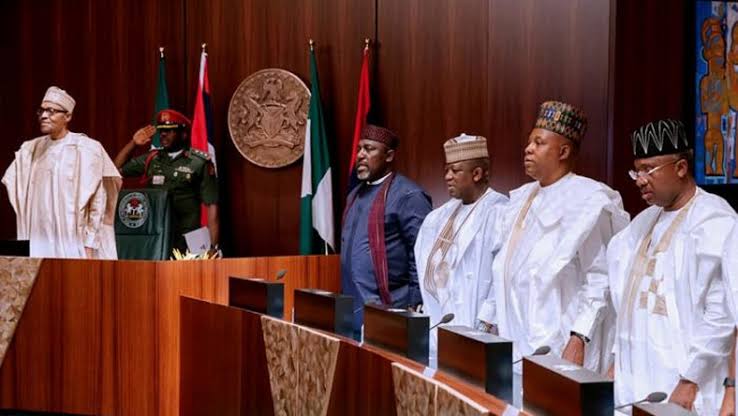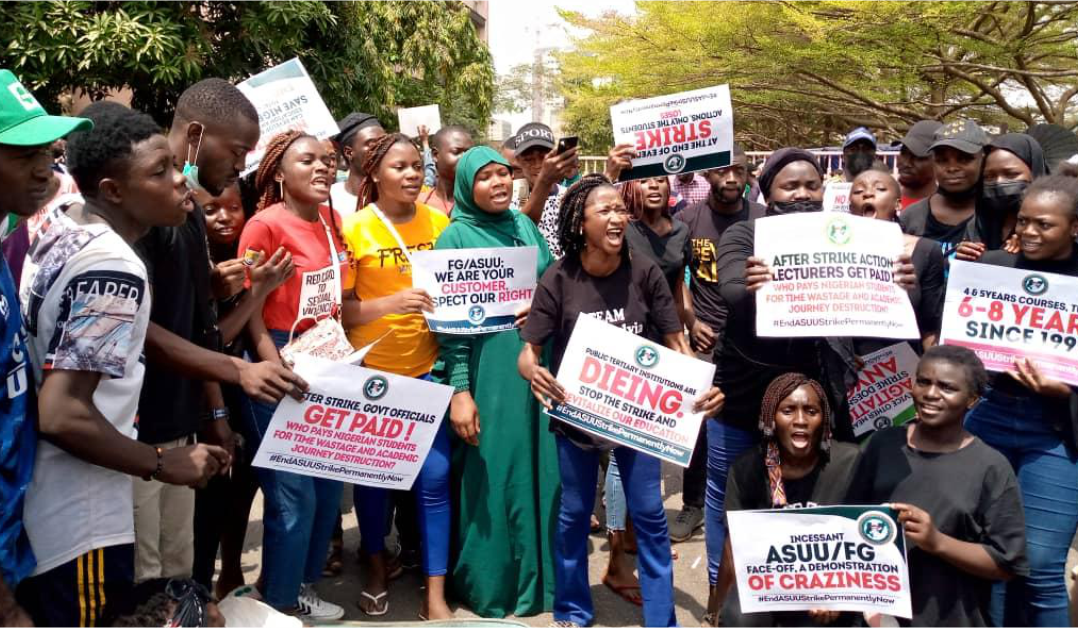Business
FG, States groan under minimum wage pressure

•States will need lifeline to pay
• Increase voids 2019 budget
By JULIUS ALAGBE
Unknown to many Nigerians, especially workers and those in support of the recently approved minimum wage increase of N30,000 per month, the federal government wage bill or personnel cost has been jacked up by over 67 percent. This means that government would spend over N6 trillion of the budget of N8.9 trillion as passed by the National Assembly last week.
This was the total amount for recurrent expenditure and debt service last year.
Based on this proportion of the budget going to the personnel cost, government will be borrowing about N3 trillion for both debt service and capital expenditure. This will be the highest borrowing level since the government assumed office in 2015. Even in 2018 when the budget was N9.1 trillion the level of borrowing was less than N2 trillion.
The President Buhari administration has based its capital expenditure on borrowing since 2015 which has seen the nation’s debt stock balloon from N11 trillion to N24.4 trillion by the end of 2018.. It is also responsible for the poor performance of government on capital projects as some of the projected capital inflow from borrowing do not materialize.
With only about four million workforce the federal government would be spending about 80 percent of its revenue on about 2.5 percent of the population of Nigeria recently put at 201 million.
Experts say this is a recipe for development disaster as it has deep ramifications and consequences both social and economic for the country. Apart from the inherent injustice in the resource allocation it will worsen the country development challenge as there is very little left for development.
Analysts also believe that the adjustment in the wage bill to accommodate the minimum wage has invalidated budgets of state governments including Federal Capital Territory, FCT, which will have to find alternative ways to raise the additional funds required to meet this new wage burden. Given the insolvent and low Internally generated revenue conditions of the states, they say that only a life-line or increase in the revenue allocation formular will save the states from financial collapse..
The aftermath of the passage of the minimum wage bill to N30, 000 per month for workers in the country, from N18,000 would result to more than N2.6 trillion increase in personnel cost per annum for the 36 states, analysts have estimated.
The amount was extrapolated from the current personnel cost budgets adjusted to the rate of increase between past and the current minimum wage. The increase which is about 67% above the previous wage regime is expected to impact on some states with lower ability to generate revenue from their home grown economy.
Cordros Capital said; “For us, amidst the significantly low internally generated revenue (IGR), we believe the federating units will continue to face fiscal constraints, and thus, rack up borrowings to, at best, cover their recurrent expenditure.
“No economic agent is permitted to control demand and supply. The state governments have right to adjust variables to balance labour demand against personnel expenditure. That means, there will be repercussion for increased wage bills, so the state with capacity may retain all or do some head cuts. Or, search for avenues where more economic benefits could accrue to the state”,
The Federal Government of Nigeria recently assented to bill seeking to increase minimum wage in the country. The bill had sought to raise minimum wage from N18, 000 or $50 per month to N30, 000 or $83.33 per 30-day. This translated to less than N820 per day under the previous wage rate regime. However, FG assent to the bills jerked up daily pay at best to about N1, 365 per day for at least 22 working days a month.
Stable oil price and improve production performance have combined to support the increased spending plan or budget as against improved internal revenue collections. In 2019, the federating units combined budgets is close to N16 trillion; this amount is expected to be split on both capital and recurrent expenditure.
Meanwhile, in 2018, the 36 states of the federation total budget was about N9.5 trillion. On the average, each state budgeted N256.92 billion. Out of this sum, personnel cost accounted for more than 58% of the entire budget size.
For a better perspective of how the states’ finances standing in the face of dragging growth, some 60% of the aggregate expenditure budget was used by the state governments to service debt and settled overheads for their homes affairs.
Some experts criticized the budget size as too ambitious in the light of low internally generated revenues by some state government in relations to what they budgeted to be spent. On the other hands, some pro-market school of thought think that for the size of the Nigeria’s population including associated annual growth rate, the budget size is too small to achieve all-inclusive growth.
Going by the budget size, per head spending has continued to be on the decline for decades. This has been as a result of the fact that government has hardly considered population growth in her budgetary assumptions. Instead, both market value and production value have always been given prominence in determining how much the government intends to spend on capital and recurrent expenditure.
Many states have adopted similar template in preparing and executing their spending plans. States’ revenues which basically come from internal revenue generation, federal allocation, VAT and some oil producing states enjoying 13% revenue derivation formula have lagged expenditure..
Again, analysis of the budget shows that capital expenditure has always underperform the budgeted amount. The states are already groaning under heavy debt service cost to revenue ratio, of which some analysts have said it is not sustainable with the current revenue pattern.
In terms of revenue generation capability, many states have been noted to be behind the growth trajectory due to the structure of their states’ economy.
Though personnel cost accounts for significant chunk of individual state budgeted expenditure, there are other costs that often lay claims on the amount that spread in as revenue.
Again, the adjustment made to the wage rate is expected to invalidate all the 36 states budgets. This is on the back of the fact that all states have already prepared budget 2019, without taking into account the issue of increase in minimum wage.
“The states would appropriate for the difference. The key issue is where would the revenues come from? People have been already over taxed, companies are struggling to survive, and more than two-thirds of these states are running civil service economy. That means, if salaries are not paid in a month, the people would have immediate impacts on trade, commerce and other economic activities,” said Cordros Capital.
States pattern of FAAC receipts
Akwa Ibom collected N1.22 trillion between 2012 and 2017, followed by Rivers State with total sum of N964 billion. The next on the rank are Delta state N913.705 billion, Bayelsa N748.892 billion and Lagos N597.76 billion.
Meanwhile, Osun state collected lowest in federal allocation among all the states including the FCT. The state collected N166.720 billion from 2012 to 2017. Followed closely is Ekiti with total federal allocation of N196.779 billion. These two states collected below what Ebonyi, Gombe and Cross Rivers state collected in the period under review. Both Ebonyi and Gombe collected N214 billion each while Cross Rivers received N225.44 billion.








